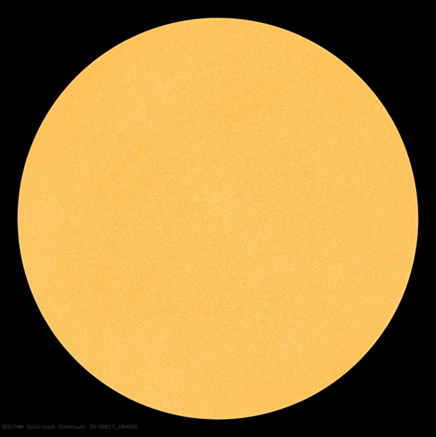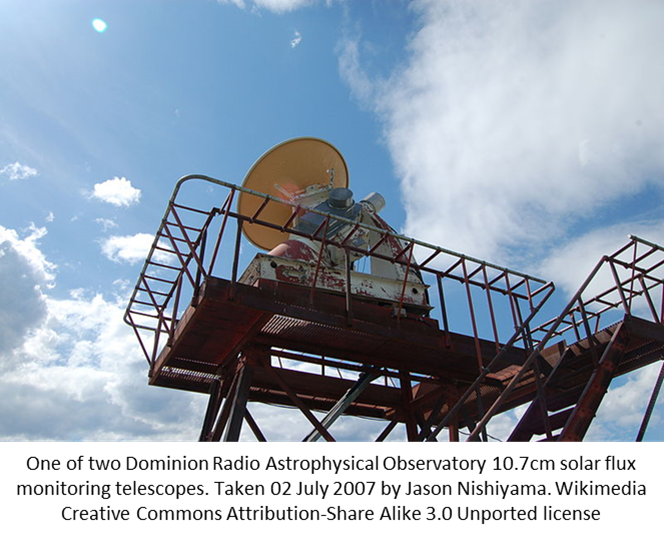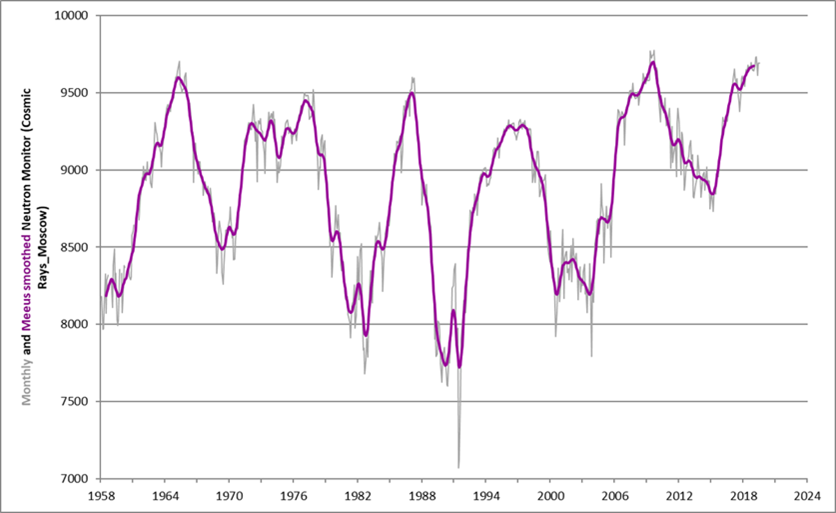The Sun has been spotless since 8 August (SILSO). Based on the preliminary sunspot numbers, the longest spotless stretch so far this solar cycle transit was from 30 May until 23 June 2019, totaling 25 spotless days. So, early September, this record may be broken if the Sun remains this inactive. The year 2019 has accumulated 107 spotless days so far (June), so there's also a good chance that 2019 will have even more spotless days than last year (208 days), making it all the way into the top 15 of years with the most number of spotless days since 1849. See the Spotless Days page at SILSO for more info.

Also the observed solar radio flux (see this STCE Newsitem for more details) is at its lowest levels since the beginning of this cycle minimum. As reported by DRAO/Penticton, values around 65.7 sfu (solar flux units, with 1 sfu = 10-22 W m-2 Hz-1) were observed on 3, 22 and 26 August. These are the lowest observed radio fluxes so far this solar cycle. Note that in August, the Sun-Earth distance is still a bit larger than the average distance of about 150 million km. Correcting for this effect results in adjusted radio fluxes which are in the lower 67 sfu. The lowest adjusted daily values so far have occurred in November 2018, with values around 65.5-65.6 sfu. A very low value (below 65 sfu) on 9 November 2017 is believed to be an erroneous measurement.

The lack of solar activity reduces our magnetic protection against cosmic rays, high-energetic particles coming from outside our solar system (see this STCE Newsitem for more info). When some finally arrive at Earth, they collide with particles in the Earth's upper atmosphere, creating a shower of secondary particles such as neutrons, which are then detected by neutron monitors such as in Dourbes or various other sites around the world (Moscow, Oulu,...). The graph underneath shows the monthly and monthly smoothed neutron count by the neutron monitor from Moscow since 1958. One can readily see the 11 year solar cycle modulation, with particle counts being the highest during low solar activity (solar cycle minimum) and vice versa. The current counts are very high and comparable to those during the previous solar cycle transit, testifying of the deep minimum we are currently going through.






